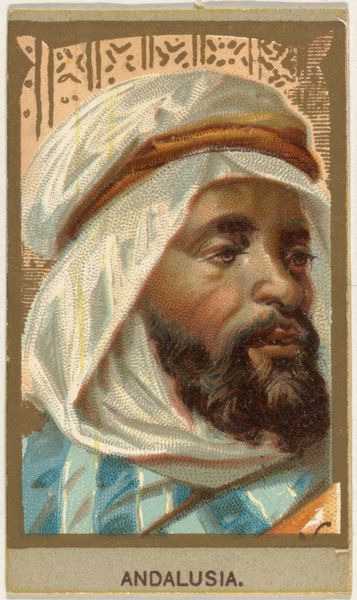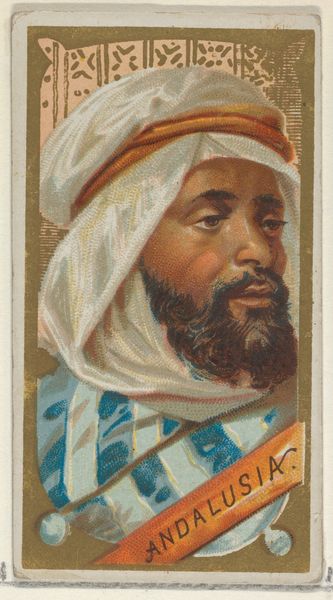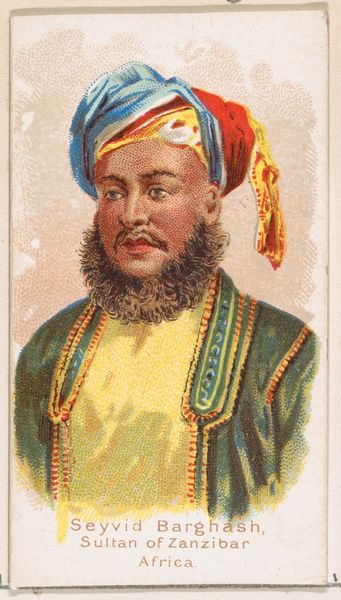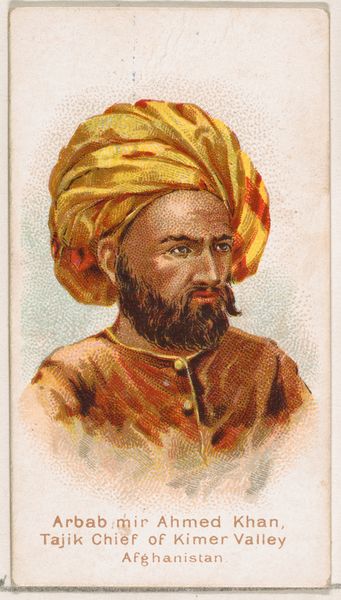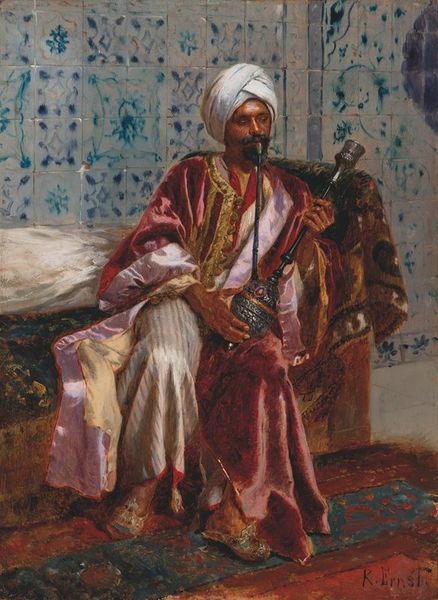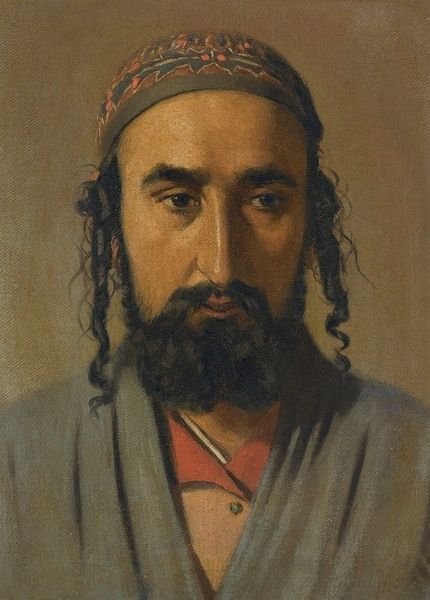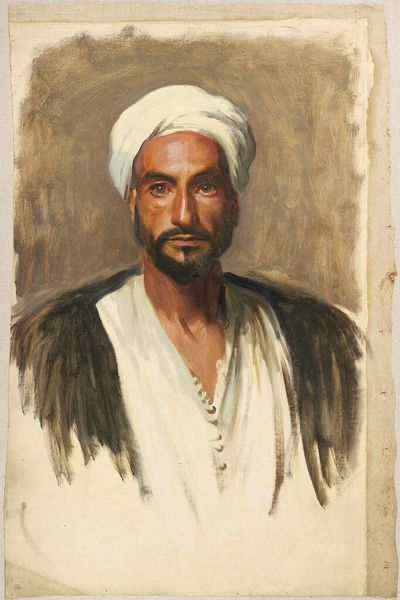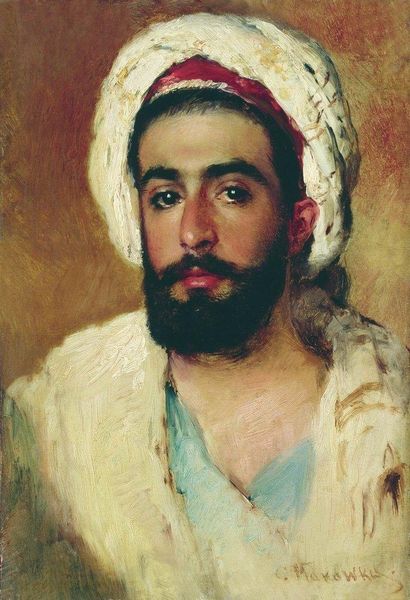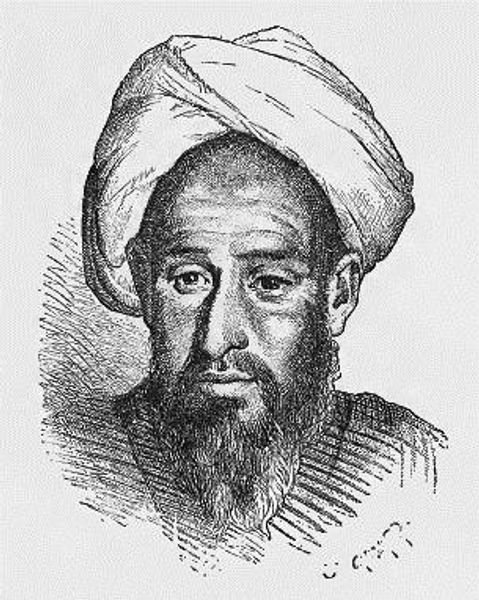
Portrait of Sliman Ben Ibrahim with Nichan El Anouar and Palmes Académiques Decorations 1910
0:00
0:00
nasreddinedinet
Private Collection
Copyright: Public domain
Curator: This is Nasreddine Dinet’s “Portrait of Sliman Ben Ibrahim with Nichan El Anouar and Palmes Académiques Decorations,” painted in 1910. It currently resides in a private collection. Editor: It has such a somber feel. The earth tones mixed with bright white and the stillness of the pose evoke quiet dignity and perhaps a bit of melancholy. I’m immediately drawn to the way the light catches the folds of his turban and robes. Curator: Absolutely. The execution here points directly towards Dinet’s training in academic art, blended, of course, with the Orientalist style. Note how meticulously Dinet renders the textures, the subtle gradations of light on the fabrics and skin. The palpable sense of impasto must be so much more striking in person, and emphasizes his materials and the act of making itself. Editor: That’s a very pertinent observation. We shouldn't ignore that these portraits and others like them contributed significantly to Europe’s understanding of North African identity during that period, or at least a carefully constructed version of it. The subject's garments, the specific symbols that he bears – the "Nichan El Anouar" and "Palmes Académiques Decorations" mentioned in the title– all construct the sitter's position within both cultures, and emphasize colonial networks. Curator: Right. He isn’t just presenting an exotic “other;” Dinet uses his medium to reflect this individual’s achievements as a member of a specific culture—achievements which we can assume would have had specific relevance and meaning in the social context in which Dinet painted this image. Editor: Which is, of course, key. And it challenges any idea of the creation of art as a vacuum sealed act. It’s worth asking what role galleries played in the interpretation and display of similar images. Who was it actually *for* at that moment? How would it be different if that same painting were encountered on a street corner or on someone's computer? Curator: So, for me, analyzing how those systems shaped its understanding brings it all back to the tactile experience; it all traces back to the conscious choice to apply oil paints in a way that communicates a feeling but is tied to so many external networks and social systems. Editor: It makes you appreciate just how rich these deceptively "simple" images actually are, doesn’t it? A powerful reminder of how deeply art reflects and refracts the world around it.
Comments
No comments
Be the first to comment and join the conversation on the ultimate creative platform.

